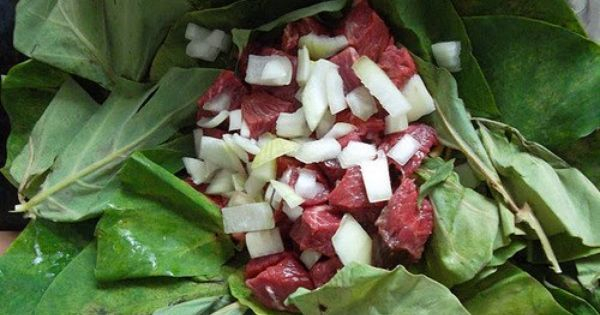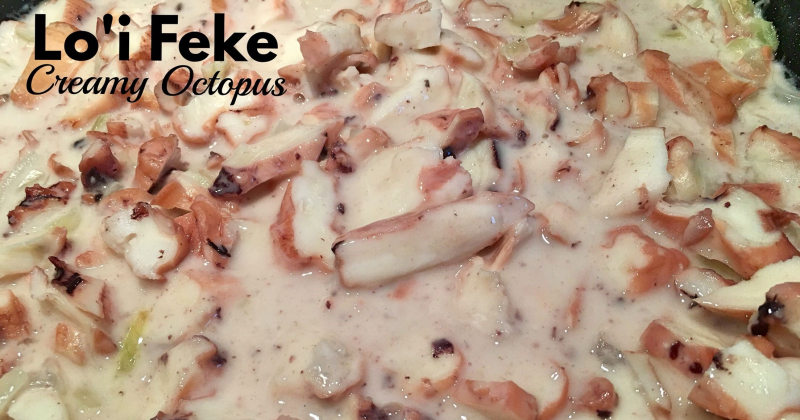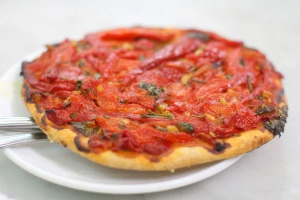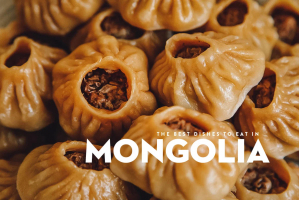Top 7 Best Foods In Tonga With Recipe
Tonga is famous for many traditional dishes such as meat, fresh seafood, and fresh tropical fruit. Now let's have a look at the best foods in Tonga with ... read more...recipes that the people here take pride in their traditional cuisine in the article.
-
As an island nation, fish, as well as other staples such as coconut, sweet potato, and cassava, play an important role in the island's cuisine. 'Ota Ika' - a well-known Tonga dish is frequently referred to as "Tongan ceviche," which is a fish marinated in citrus and coconut milk that is comparable to Latin American ceviches in certain aspects. It's a traditional recipe in which raw fish is marinated in lemon essence and coconut cream before being fried. To enhance flavour, it also has tomatoes, chillies, cucumbers, and onions. 'Ota Ika' is a delicious delicacy that you must try if you visit Tonga. The dish should be presented and enjoyed as soon as possible.
Ingredients:
1 kg fresh fish fillets, mullet or gurnard; 2 lemons, juice only; 3 small spring onions, chopped finely; 1 cucumber, seeds removed, chopped into bite-size pieces; 2 tomatoes, chopped; 1/2 green or yellow pepper, chopped; 1.5 cups
coconut cream; 1 cup of waterInstruction:
- Rinse the fish and cut it into cubes.
- Place in a shallow dish and cover with the lemon juice.
- Leave to marinate for at least 1 hour in the fridge.
- Drain off the lemon juice.
- Add the spring onions, cucumber, tomatoes, pepper, coconut cream and water.
- Season with pepper and mix well.
- Transfer to a serving bowl, cover and chill before serving.
Tips: The longer the fish is left to marinate the more the fish will cook.

https://www.tasteatlas.com/ota-ika 
https://www.pinterest.com/ -
Lu pulu is a Tongan meal made of taro leaves, coconut milk, onions, tomatoes, and tinned corned beef from New Zealand, which is frequently imported. The contents are wrapped in taro leaves, and the whole thing is wrapped in aluminum foil or banana leaves and baked for about 2 hours in the oven. The dish should be served hot, with rice or yams as a side dish. The people of Tonga, as well as any visitors who try it, adore it. For a delicious taste, the meal is baked and served hot.
Ingredients:1 large onion, chopped; 1 medium tomato, chopped; 1(12 ounces) can of corned beef (New Zealand brands preferred); 8 ounces frozen package coconut milk, thawed; aluminum foil, and or banana leaf, for wrapping
Instruction:
1. Preheat the oven to 350 degrees.
2. Wash and remove the stems from the lu'au leaves.
3. Chop the onion and tomato.
4. Thaw or make the coconut milk.
5. Layer two or three leaves in the palm of your hand.
6. Place a heaping tablespoon or so of onion and tomato into the centre of the leaves.
7. Top with about 2 heaping tablespoons of corned beef (one can make about 5-6 packets).
8. Ladle about 1/4 cup of coconut milk on top of it all.
9. Wrap the lu'au leaves into a bundle and then wrap and secure with banana leaf or aluminum foil.
10. Place the lupulu in a shallow pan and bake for about 1 hour.
11. Peek into the bundles to make sure the lu'au leaves are thoroughly cooked and a dark, soft green color. (This is important, as raw taro leaves irritate the skin and throat when not fully cooked).
12. Cook longer if necessary.
13. Remove from the aluminum foil and serve hot with whatever sounds nice--rice, yams, taro, etc.
https://mybios.me/ 
https://www.pinterest.com/ -
Kapisi pulu is a famous Tongan dish served at special events and celebrations. Kapisi pulu is similar to lu pulu, except instead of taro leaves, it includes cabbage and tinned corned beef, tomatoes, onions, and coconut cream. These ingredients are blended, then wrapped in cabbage leaves and baked for one to one and a half hours in an oven or an umu. Kapisi pulu is sometimes served with kumala, which is a sweet potato. When the kapisi pulu is ready, the banana leaves are unwound and the interior contents are eaten while still hot.
Ingredients:6 -8 large cabbage leaves; 1 (400 g) can of corned beef; 1 onion, chopped; 1 tomato, chopped; 2 cups of coconut cream; Handful of fresh cilantro, chopped
Instruction:
1. Place the cabbage leaves on foil paper to make a cup shape. It would help to put all these in a round cake tin. Into the cup-shaped cabbage leaves, put the corned beef, onion, tomato, some shredded cabbage and coconut cream.
2. Wrap the foil around and bake in a moderate oven (350F) for about 1 to 1 1/2 hours.
3. Serve with rice or sweet potatoes.
https://nl.pinterest.com/ -
The basic variant of a Tongan dish is Faikakai topai, which consists of dumplings (or topai) in a sweet coconut syrup (lolo in Tongan). Breadfruit (faikakai mei), taro leaves (faikakai ngou'a), cassava (faikakai manioke tama), and bananas (faikakai malimali) are among the many versions of the same dish. To be honest, the dumplings are tasty, but the coconut caramel is the star of this dish (lolo). Yes, lolo is just caramelized sugar with coconut milk instead of the cream or butter used in classic caramel recipes.
Ingredients:
- For the lolo (coconut syrup): 1 cup sugar, 1 cup coconut cream (or thick coconut milk)
- For the topais (dumplings): 2 cups flour, 2 teaspoons baking powder, 1½ cup shredded coconut, 2 ripe mashed bananas, 2 tablespoons sugar, 1 vanilla bean, split in half and grated, ½ cup of water; 3 tablespoons of butter
Instruction:
1. Lolo (coconut syrup)
Put the sugar in a small saucepan over low heat and dissolve slowly.
Before reaching a boil, add the coconut cream and stir until the mixture is thick. Set aside.2. Topais (dumplings)
- Bring a large pot of water to boil.
- Meanwhile, combine flour, baking powder, ½ cup (50g) of shredded coconut, bananas, sugar and vanilla in a bowl.
- Mix all ingredients together and gradually add ½ cup (100ml) of water to form a fairly dry dough.
- Roll into tablespoon-sized balls and place in the pot of simmering water.
- Gently boil the dumplings for 15 minutes or until cooked through. Drain and set aside.
- Melt the butter in a large skillet over medium heat.
- Add 1 cup of shredded coconut and stir until the coconut turns golden.
- Put the dumplings in the pan and coat with coconut for 2 minutes.
- Remove carefully and serve with the coconut syrup.

https://www.196flavors.com/ 
https://www.pinterest.com/ -
As mentioned before, Tonga is a nation with a variety of beaches, therefore it provides tourists with multiple choices of seafood. One of the must-try dishes, when you visit Tonga, is Feke. Feke, also known as lo'i feke, is a grilled octopus or squid with a coconut sauce. The coconut sauce is the standout feature of this dish, which can't be found anywhere else. The octopus is cooked in a pot with coconut cream and, in most cases, onions for added flavor. It is extremely easy and simple to prepare and make Lo'i feke.
Ingredients:
1 octopus; 1 large onion, diced; thick coconut cream
Instruction:
1. Suggestions for accompaniment: Serve with 'ufi (yam or sweet potatoes) boiled in coconut cream or peeled green bananas again boiled in coconut cream and pele (a spinach-like vegetable) in thick coconut cream.2. Put the fresh or defrosted octopus in a heavy pot and gently boil all the liquid out.
Dice the octopus and put it back into the pot with the onions and the thick coconut cream and simmer for about another 3 minutes.

https://www.pinterest.com/ -
Tonga is where Otai comes from. In the south Pacific, a tiny group of Polynesian islands. Tonga has around 170 islands, although most are too small to be habitable; only 36-52 are inhabited (depending on which source is used), and 70% of Tongans live on Tongatapu, the major island. From Hawaii to New Zealand, it is two-thirds of the way. 'Otai' is a refreshing drink for summer. The simple recipe is light and airy, and it's suitable for any occasion. Watermelon juice, pineapple, lime juice, and, most crucially, coconut milk are all used in this recipe. In the country, the wonderful texture and deep flavor are a must-try.
Ingredients:
5-6 cups cold seedless watermelon, cubed; 1 cup cold crushed pineapple; 1 can (13.5 ounces approx.) cold full fat coconut milk; 1 c cold coconut water; 2 tablespoon lime juice; 2-3 teaspoon simple syrup - optional
Instruction:
1. Place watermelon in a large bowl and mash or grate until mostly liquid but still some small chunks remain.
2. Add in the rest of the ingredients except simple syrup and mash a little more, stir well.
3. Taste and add simple syrup if a sweeter drink is desired, then chill 30 min then serve over ice.

https://www.pineappleandcoconut.com/ 
https://www.pineappleandcoconut.com/ -
Keki, Tongan-style doughnuts that are slightly different from conventional doughnuts, is another sinful treat worth tasting. They're deep-fried dough balls that can be found in bakeries across Nuku'alofa, as well as the Matuku-ae-tau Bakery in Pangai and Lifuka Island in Ha'apai. These deep-fried doughnuts may be found at any bakery across the country. It is a popular dish that all sweet-toothed people enjoy.
Ingredients:
4 cups of plain flour (500 g), 2 teaspoons of active yeast (or 7g sachet), 2/3 cup of sugar, 2 cups of warm water, 1500 g Shortening or vegetable oil for deep frying (8 cm deep)
Instruction:
1. Combine yeast with 1 cup of warm water and 1 teaspoon of the sugar in a large bowl and mix until the yeast has dissolved. Leave for 10 minutes or until frothy.
2. Add remaining water, sugar and flour and stir to mix. It should form a very wet dough and more like a very thick batter. Add a little more water (up to 1/4 cup of water) if it's too dry or add a bit more flour if too runny.
3. Using your hands, mix the flour in well until a smooth batter is formed and coming away from the side of the bowl. Cover and leave to rise until doubled in size (about 1-1&1/2 hr).
4. Release the gas by stirring the mixture and giving it a quick mix using your hand. Then allow the dough to rest for about 20-30 minutes.
5. Begin heating the oil in a large heavy pan (about 15-20mins). Test oil is ready with a small scoop of batter. It should drop to the bottom and rise with a couple of seconds and begin to turn light golden slowly. If it browns quickly (within 30 seconds) it's too hot, turn heat down and retry. Keke should cook slowly (take around 2 minutes for each side to brown golden), but should rise to the top within a couple of seconds otherwise it's not hot enough and will absorb too much oil.
6. Using your hand, scoop up a handful of batter and squeeze out a golf ball size doughnut into the oil (see pictures). Continue until there's a single layer of keki in the oil. Turn with a long fork and allow to cook for around 2 minutes each side until golden brown. Remove from the oil with a slotted spoon and allow to drain. Test the first keki to ensure it is cooked through and adjust cooking time or heat for the rest.
https://www.thecoconet.tv/ 
https://www.pinterest.com/






















